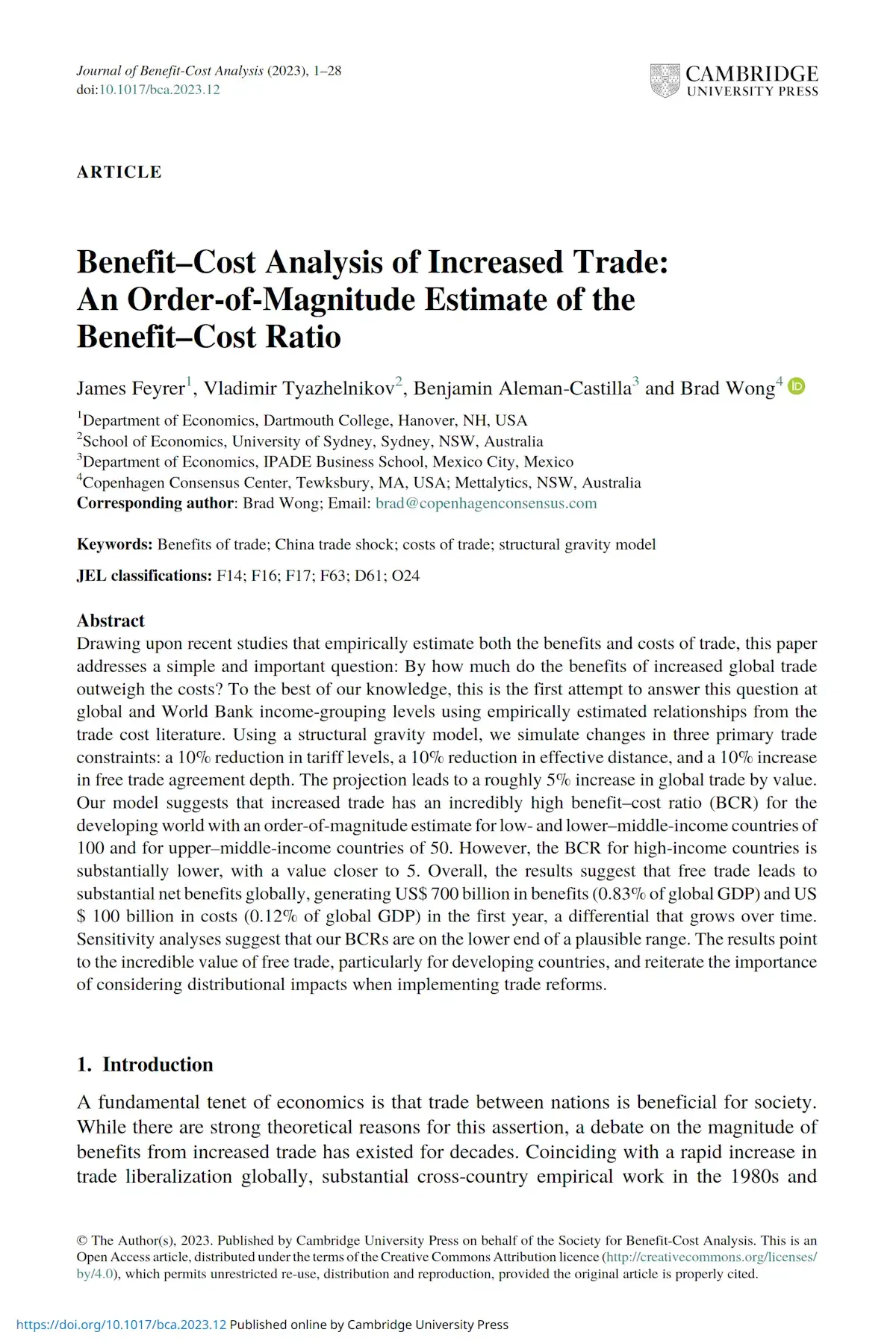Halftime for SDGs: Trade
Best Investment Paper
Drawing upon recent studies that empirically estimate both the benefits and costs of trade this paper addresses a simple and important question: By how much do the benefits of increased global trade outweigh the costs? To the best of our knowledge, this is the first attempt to answer this question at global and World Bank income-grouping levels using empirically estimated relationships from the trade cost literature. Using a structural gravity model, we simulate changes in three primary trade constraints: a 10% reduction in tariff levels, a 10% reduction in effective distance, and a 10% increase in free trade agreement depth. The projection leads to a roughly 5% increase in global trade by value. Our model suggests that increased trade has an incredibly high benefit-cost ratio (BCR) for the developing world with an order-of-magnitude estimate for low- and lower–middle-income countries of 100, and for upper–middle-income countries of 50. However, the BCR for high-income countries is substantially lower, with a value closer to 5. Overall, the results suggest that freer trade leads to substantial net benefits globally, generating US$ 700 billion in benefits (0.83% of global GDP) and US$ 100 billion in costs (0.12% of global GDP) in the first year, a differential that grows over time. Sensitivity analyses suggest that our BCRs are on the lower end of a plausible range. The results point to the incredible value of freer trade, particularly for developing countries and reiterates the importance of considering distributional impacts when implementing trade reforms.
The final peer-reviewed published article can be found here:


